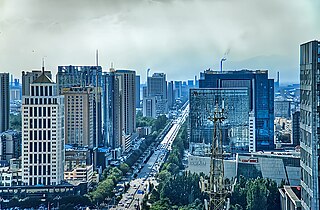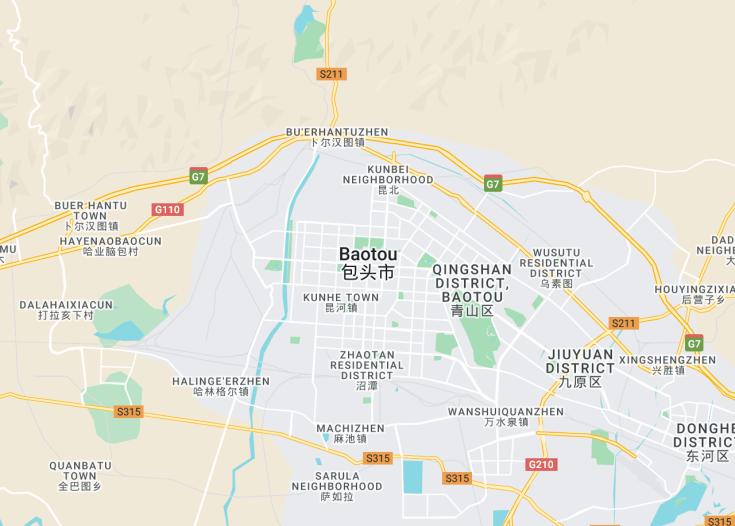Baotou, the largest city in Inner Mongolia, China, offers a unique blend of urban and traditional lifestyles, flanked by the grandeur of the Kubuqi Desert and lush grasslands. This bustling industrial city is renowned for its rich deposits of rare earth minerals and a vibrant culture that showcases Mongolian heritage. Visitors can explore attractions such as the sprawling Genghis Khan Mausoleum, the serene Baotou Wetland Park, and the mysterious Ruins of Zhaojun, providing a diverse glimpse into the region’s history and natural beauty.
For a truly local experience, consider visiting during the Nadam Fair, held yearly, where you can witness traditional Mongolian sports and cultural performances.
Do not miss the chance to taste the local cuisine, particularly the dishes featuring lamb and dairy products, which are staples of Mongolian culinary traditions.
Top things to do & see in Baotou
Select the following sights and activities to discover best tickets and tours available in Baotou.
Baotou: A Glimpse into China’s Industrial Heartland
| Country | China |
| Time in Baotou | GMT+8 |
| Language spoken | Mandarin |
| Population | 2,650,364 (Source: 2020 Census) |
| Currency | Chinese Yuan (CNY ¥) |
| Airports |
|
Baotou, often hailed as the back-bone of Northern China’s industrial sector, is a city that perfectly blends the vibrant pace of modern development with rich historical narratives. Located in Inner Mongolia, Baotou is the largest city in the region by both population and economic output. Historically, it was an essential part of the old Silk Road which catalyzed multicultural exchanges and economic activities across Asia.
The city’s historia resurgence blossomed with the discovery of vast mineral resources, making it a pivotal mining and industrial hub. Baotou has earned its nickname, ‘City of Deer’, from a widespread folklore that a deer was once spotted sprinting through its landscapes, lending the city an emblem of beauty amidst the heavy industries.
This intriguing juxtaposition of nature and industry is characteristic of Baotou. The city houses several protected areas and nature reserves, making it an unparalleled destination for those intrigued by how urbanization integrates with natural habitats. Notably, it is a leading producer of steel, rare earth minerals, and aluminum, vital for various global industries including electronics and aerospace.
The city also offers a unique culinary palette influenced by Mongolian traditional dishes alongside classic Chinese flavors, exemplifying cultural amalgamation at its finest. Visitors often revel in the nuances of tasting Roast Whole Lamb, a regional delicacy, portraying the deep culinary arts heritage.
From a touristic perspective, the Genghis Khan Mausoleum and Baotou Rare Earth Museum provide deep dives into historical and modern significances respectively, drawing educationally driven tourists globally. Moreover, the integration of the Yellow River’s beauty running through Baotou introduces an aesthetic appeal to its industrial essence, attendants can experience serene riverside views juxtaposed with the bustling city life.
Beyond its industrial backbone, Baotou’s spirit encapsulates a vibrant community deeply rooted in Mongolian traditions meshed with the modern Chinese ethos, making it a distinctive site within China’s vast territorial expanse.
Where is Baotou?
Baotou is located in Inner Mongolia, a vast autonomous region of northern China. It sits on the west bank of the Yellow River and enjoys a tempered continental climate.
Distances:
| Route | Distance by car | Time by car |
| Beijing to Baotou | 610 km | 7 hr 50 min |
| Shanghai to Baotou | 1950 km | 21 hr |
| Hohhot to Baotou | 170 km | 1 hr 58 min |
What is Baotou famous for?
Baotou is renowned for its significant role in the production of steel and rare earth minerals. The city’s strategic location and rich mineral resources make it a central hub in China’s industrial landscape.
History
Prehistory and Early Settlements
The region around modern-day Baotou has a long history that dates back to ancient times. Archaeological findings suggest that the area was inhabited by nomadic tribes during prehistoric times. These early inhabitants were primarily engaged in hunting and fishing, utilizing the rich natural resources of the Yellow River basin. Baotou’s strategic location at the confluence of the Yellow River and its tributaries made it an attractive area for these ancient communities.
1000 – 1200 AD: The Liao and Jin Dynasties
During the period of the Liao Dynasty (907–1125 AD) and subsequently the Jin Dynasty (1115–1234), Baotou emerged as a significant military and trading post. It served as a critical juncture on the burgeoning network of trade routes that later became part of the famous Silk Road. This era marked the beginning of Baotou’s development as an urban center, influenced heavily by the exchange of goods and cultures between the nomadic tribes of the north and the settled agricultural societies in the south.
1500 – 1900 AD: Growth and Development
In the following centuries, Baotou continued to flourish as a trade center. During the Ming (1368–1644) and Qing (1644–1912) dynasties, the city saw significant developments in terms of infrastructure and administration. The construction of fortifications and the establishment of official marketplaces indicated Baotou’s growing importance in the regional economy. The area’s abundant natural resources, especially coal and rare earth minerals, began to be systematically exploited towards the late Qing Dynasty, setting the stage for Baotou’s future industrial growth.
1900 – Present: Industrialization and Modernization
The 20th century was a period of rapid transformation for Baotou. The discovery of massive rare earth mineral deposits in the surrounding area propelled the city into the industrial age. Post-1949, under the People’s Republic of China, Baotou became an industrial heavyweight, specializing in steel production and rare earth processing. These industries played a crucial role in the city’s economy, though they also posed environmental challenges. Today, Baotou is a modern industrial city that is also trying to balance economic growth with environmental sustainability.
Visit Baotou
What to see and do in Baotou
Visitors to Baotou will find a blend of historical sites and natural wonders that showcase the city’s rich heritage and its scenic landscapes. Key attractions include:
- The Meidaizhao Temple, an exquisite example of Tibetan Buddhist architecture.
- The Genghis Khan Mausoleum, a cultural complex dedicated to the legendary Mongol leader.
- The Baotou Rare Earth Museum, which offers insights into the city’s pivotal role in the global rare earth industry.
- Wudangzhao Monastery, the largest Tibetan Buddhist monastery in Inner Mongolia.
- Exploring the grasslands of Inner Mongolia, offering horse riding and a glimpse into the traditional lifestyle of the nomadic tribes.
Festivals in Baotou
Baotou hosts several vibrant events throughout the year, reflecting its rich nomadic heritage and cultural diversity. Prominent among these are the Nadam Grassland Festival, typically held in summer, which features traditional sports, music, and dance, and the Spring Festival, where visitors can experience traditional New Year celebrations including dragon dances and special culinary delights.
Best time to visit Baotou
The optimal time to visit Baotou is from May to September when the weather is warm and conducive for exploring the city’s outdoor attractions and nearby grasslands. This period also coincides with local festivals that are colorful showcases of regional culture.
Is Baotou worth visiting?
Baotou offers a unique mix of industrial history, cultural richness, and natural beauty, making it an intriguing destination for curious travelers. While the city’s environmental challenges cannot be overlooked, the opportunities to explore Mongolian culture, the dramatic landscapes of the grasslands, and significant historical sites provide compelling reasons to visit. However, visitors should be prepared for the industrial character of the city, which can be quite a contrast to its natural and historical sites. Overall, Baotou is worth considering for those who appreciate the confluence of nature and industry in an urban setting.










